Sheep farming is most popular and raised for wool, milk, skin, and manure production. Sheep farming has continuous growth in India as an agriculture business and earning source. Diseases infecting sheep result in considerable economic and productivity losses. So, preventing diseases reduces economic losses and improves animal welfare.
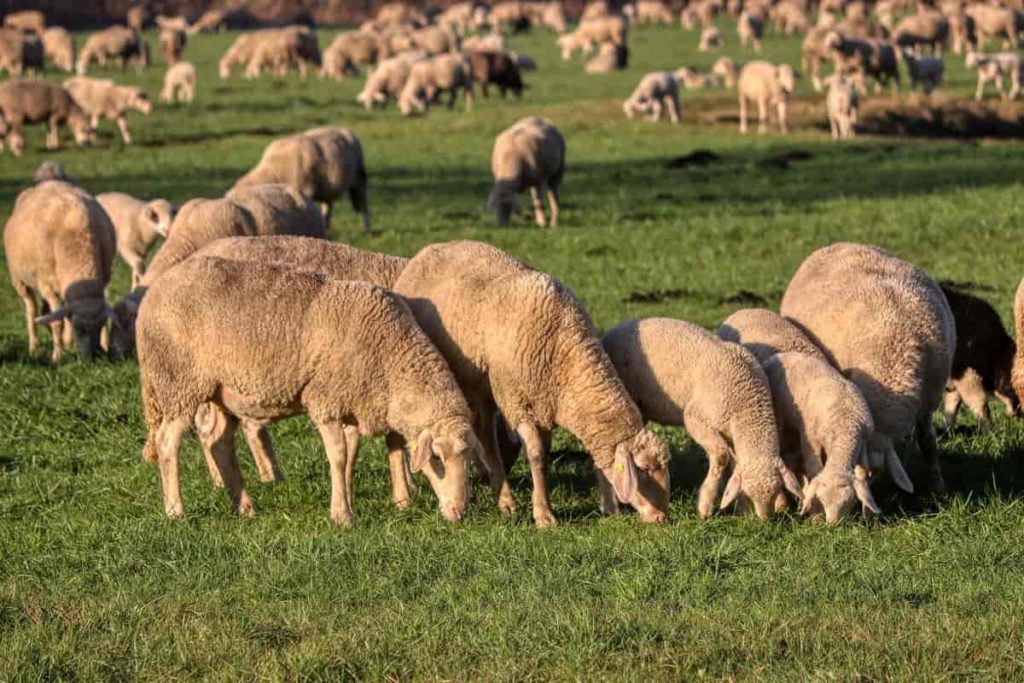
Common Sheep diseases, symptoms, and treatment
What are the most commonly occurring diseases in sheep?
Anthrax
Cattle and sheep with anthrax disease generally die suddenly. It is a bacterial infectious disease. Bacterium, Bacillus anthracis, caused this Anthrax in grazing animals like sheep, goats, and cattle. Just before death, infected animals exhibit signs of high fever; temperature may go up to 41-42°C. Blood can be seen around the nose, mouth, and anus of carcasses.
Bluetongue
Bluetongue is caused by a pathogenic virus called the Bluetongue virus. This Bluetongue virus is spread by insects called biting midges like Culicoides. Ticks or sheep keds may also play a vital role in transferring the virus from an infected animal to a healthy animal. There is no specific treatment available for bluetongue disease. Vaccination is the only best to prevent animals from this bluetongue virus.
Brucellosis
Brucellosis is an infectious disease seen in animals, and it is caused by bacteria of the genus Brucella. This bacterial disease can be spread by an environment that has been contaminated with discharges from infected animals or by direct contact with infection-affected animals.
FMD
A highly infectious virus causes foot and mouth disease among farmstock. FMD virus is responsible for this disease. The viral disease causes blisters in the mouth and feet of cattle, pigs, sheep, goats, and other cloven-hoofed animals. Affected animals will suffer from a high fever; Body temperature may touch 41°C and vesicular development on the interdigital cleft, heel bulbs, coronary band, and mouth. These animals are unable to stand & walk properly.
Sheep pox
Sheep and goat pox viruses are spread by aerosol respiratory secretions and nasal discharges between animals, direct contact, or by fomites. The viruses can be found in saliva, secretions from the nose or eyes, milk, urine, and dung. The scabs from skin lesions are also contagious as the virus enters through them when it gets into contact with soil that has the virus.
In case you missed it: Common Dairy Cattle Diseases, Symptoms, and Treatment: Check How this Guide Helps Dairy Farmers
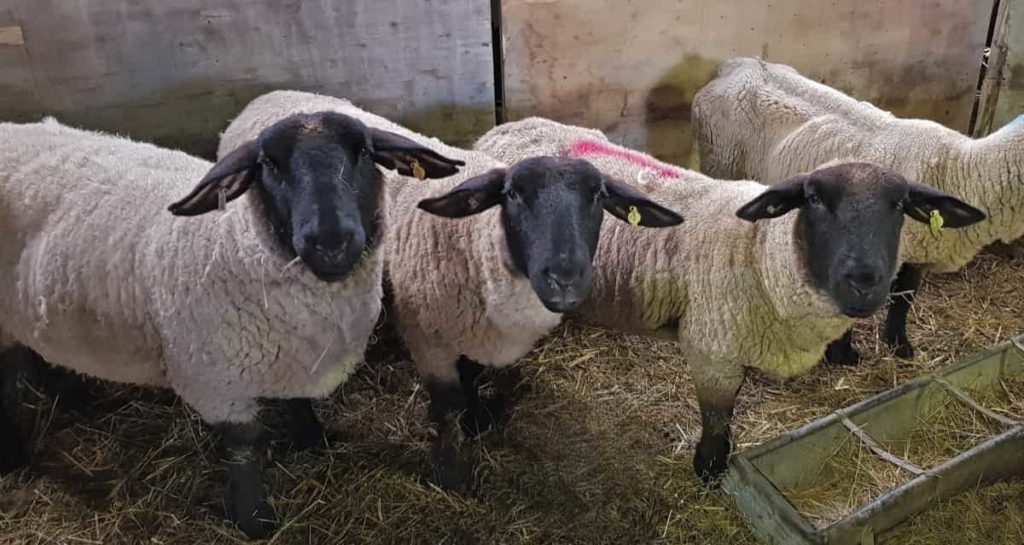
Scrapie
Scrapie is a degenerative, fatal disease. It affects the nervous system of sheep. Infected flocks can experience significant production losses. Scrapie is slow to develop; it generally takes more than a year for clinical signs to appear in an infected animal.
What are the symptoms of Coccidiosis infected in sheep?
Due to the damage to the cells in the intestine lining, the primary symptoms of Coccidiosis in sheep are affected sheep may have diarrhea with foul smelling and contain mucus and blood. Sheep diarrhea may look like a dark tarry, and, in severe infection cases, large blood clots can be seen.
And also, the affected animals may exhibit signs like loss of appetite, weakness, abdominal pain, and fatigue. Some animals may die before showing signs of Coccidiosis if they are exposed to a large amount of Coccidia in the sheep environment and become a carrier for transmission of the virus to healthy animals.
What is blackleg in sheep?
Blackleg is a bacterial disease less frequently seen in sheep, and it generally occurs in cattle. It is caused by the soil-bourne bacteria called Clostridial chauvei. When conditions are favorable, this bacterium will produce powerful poisonous toxins, and the effects of these toxins are usually fatal. The disease progress very rapidly in affected animals and often leads to death before the owner has observed any symptoms. Sheep from blackleg disease can be protected by vaccination.
How does blackleg affect sheep?
As the disease progresses very rapidly, the swelling increases, and there is crepitation on palpation. Also, the skin of affected animals becomes cold and insensitive, with decreased blood supply to affected areas. General clinical signs include prostration and tremors. The affected animals may die within 12–48 hours after infection.
What does bottle jaw look like in sheep?
This disease is caused by a barber’s pole worm. This disease-infected animal exhibits a sign of fluid swelling beneath the jaw. Because of this reason, it is called Bottle Jaw disease. Anemia is also another sign of an infestation and can be detected in the sheep’s lower eyelid. The eyelid may be white or pale instead of pink or red for appearance. Signs of barber pole worm infestation include diarrhea, dehydration, rough hair coats, incoordination, lethargy, bottle jaw, and pale mucus membranes.
In case you missed it: Common Poultry/Chicken Diseases, Symptoms, and Treatment: Check How this Guide Helps Poultry Farmers
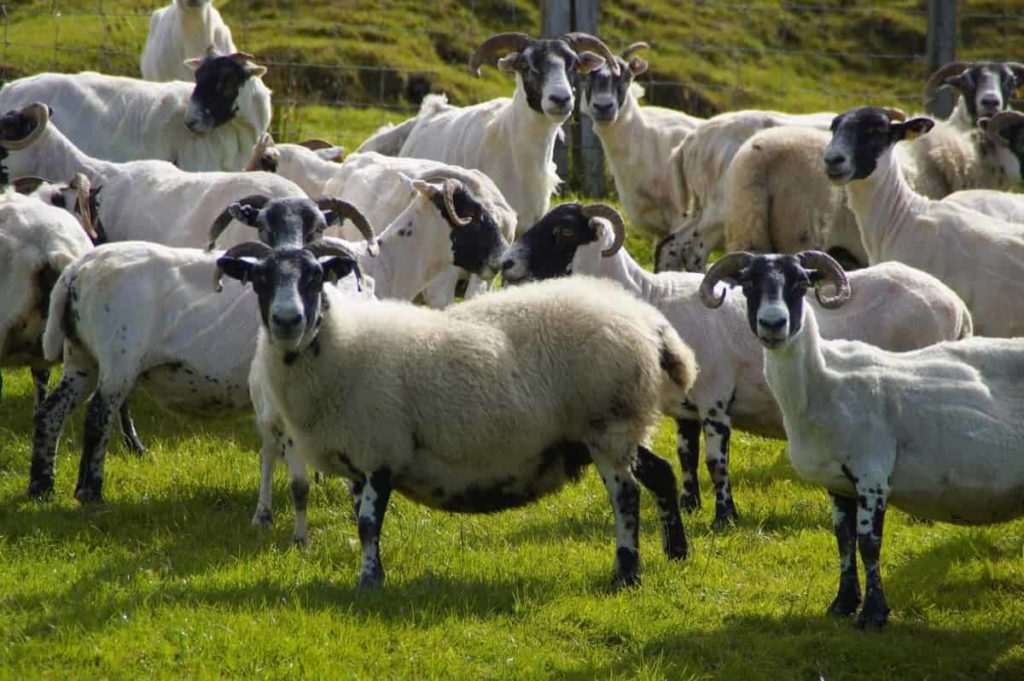
What is Coccidiosis?
Coccidiosis is caused by the genus Eimeria, a protozoan parasite. These parasites occupy a specific segment of the intestinal tract in affected animals. Coccidiosis is one of the most frequently occurring diseases affecting small flocks around the world, causing a loss in performance and even mortality. Coccidiosis is most commonly seen in young lambs aged between 2 – 8 weeks and at 5-6 weeks of age when they begin to eat grass.
What is Pasteurella in sheep?
Pasteurellosis of sheep is commonly a bacterial infection in the lower respiratory tract. Three common bacteria cause Pasteurellosis: Bibersteinia trehalosi, Pasteurella multocida, and Mannheimia haemolytica. This bacterium causes typically causes pneumonia and death. This disease is mainly seen in young lambs at the highest risk; however, sheep of all ages are at risk. The disease is characterized by acute illness, high fever, dyspnea, anorexia, and death.
Which disease most commonly affects lambs?
Enterotoxemia type C
Enterotoxemia is a severe disease frequently seen in sheep of all ages. This disease is caused by two strains of bacteria called Clostridium perfringens. These strains are termed types C and D. These bacteria are found normally in low numbers in the gastrointestinal tract of sheep. Enterotoxemia is also known as overeating or pulpy kidney disease. These bacteria are generally found in the soil and will enter the gastrointestinal tract of healthy sheep through the nose or mouth.
Tetanus (lockjaw)
Tetanus, also called lockjaw, is a fatal disease of sheep caused by the bacterium Clostridium tetani. The neurotoxin released by this bacterium leads to generalized muscular spastic paralysis. Symptoms are difficulty in swallowing, muscular stiffness in the neck, the rigidity of abdominal muscles, and fever in sheep. The affected animals may also have symptoms like spasms, bloat, panic, uncoordinated walking, and the inability to eat and drink.
Black disease
Black disease is a fatal infectious disease caused by the bacterium Clostridium novyi. This disease affects young adult sheep or occasionally cattle, usually aged 1 to 4 years. Once these bacteria enter the sheep body orally, the organism lodges and waits in the liver, this bacteria in the liver lead to liver flukes in animals like sheep. Animals with the black disease are profoundly depressed and can have abdominal pain. Sudden death is common. Clinical findings on post-mortem examination include rapid putrefaction of the carcass with black discoloration under the skin.
Malignant Edema
Malignant oedema is a most rapidly spreading fatal, acute wound infection disease. It is caused by a rod-shaped germ, spore-forming bacteria called Clostridium septicum. This wound infection disease is frequently seen in grazing animals, most commonly in sheep and cattle, and goats. It is caused by toxins produced by several types of clostridial organisms that normally live in the soil but can infect wounds.
How do you control scrapie in sheep?
Unfortunately, there is no treatment for scrapie. This disease transmission is limited by maintaining proper biosecurity measures. And also, to reduce the risk of scrapie, sheep should purchase from known scrapie-free flocks and focus on hygienic lambing management, flock certification, genetic testing for resistance, and level of the immune system. Affected animals show signs of depression, drooping ears, unable to stand, and weight loss.
In case you missed it: Common Goat Diseases, Symptoms, and Treatment: Check How this Guide Helps Goat Farmers
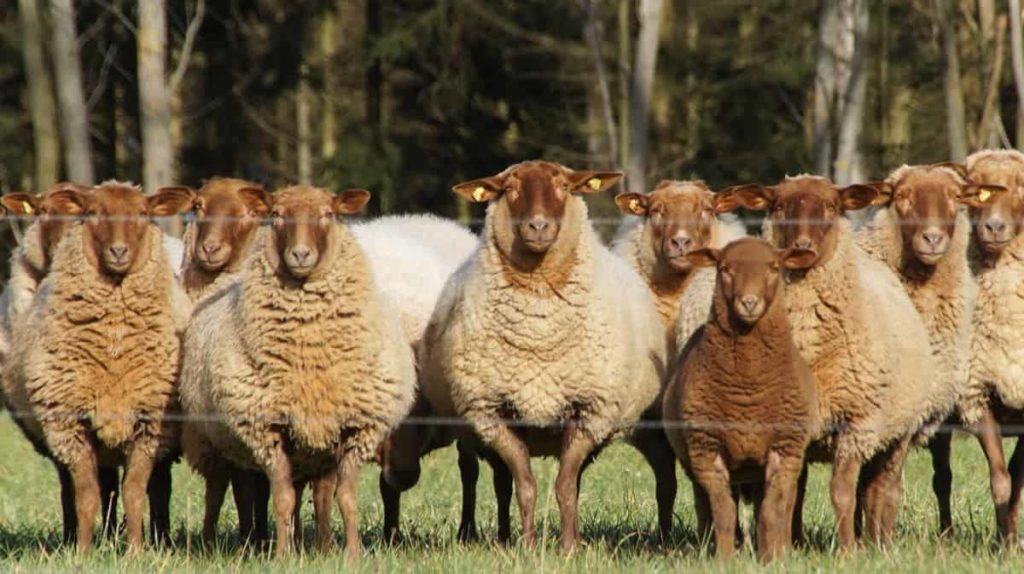
How do you treat botulism in sheep?
Botulism is a rapidly fatal motor paralysis bacterial disease caused by Clostridium botulinum types A–G. This bacterium produces dangerous toxins, which lead to death due to respiratory and cardiac paralysis. There is a vaccine available in the market that will work quickly to protect the flock. Identify the source of the toxin, i.e., infected animals, and immediately separate them from the herd to limit the further spreading of this disease to healthy animals.
What are the symptoms of tetanus in sheep?
Tetanus is also called lockjaw. This disease is a common, fatal disease in sheep caused by a bacterium called Clostridium tetani. The organism can infect sheep through wounds from shearing, docking, castration, or vaccination. Common symptoms exhibited by affected animals are muscle stiffness and spasms, bloat, panic, uncoordinated walking, and loss of appetite.
What does blackleg look like?
Blackleg is a bacterial disease commonly seen in cattle and less frequently in sheep, caused by the bacteria Clostridial chauvei. The disease progress very rapidly in affected animals and often leads to death. Painful swelling on a limb, swelling will become cold, dry, and leathery, lameness, depression, loss of appetite, and a hot, are the common symptoms in affected animals.
What are the signs and symptoms of liver fluke in sheep?
Livers flukes are also known as Fasciola hepatica. Liver flukes are not host-specific. Fasciolosis does not just afflict sheep; all grazing animals, including cattle, deer, rabbits, and horses, are susceptible to infection. The signs can include ill thrift, anaemia, bottle jaw, and severe infections leading to sudden death.
What are the major symptoms of barber’s pole worm in sheep?
Signs of barber pole worm infestation include rough hair coats, incoordination, lethargy, diarrhea, dehydration, bottle jaw, and pale mucus membranes. Barber pole worm causes Bottle jaw disease. Bottle jaw, also called mandibular edema, happens when fluid accumulates under a sheep’s jaw.
What causes pneumonia in sheep?
Pneumonia refers to pulmonary parenchyma inflammation. This disease is usually accompanied by inflammation of the bronchioles. Pneumonia in sheep is caused by the bacterium Pasteurella multocida and Mannheimia haemolytica. Pneumonia occurs when infectious and non-infectious agents cause the lungs of sheep to become inflamed. The earliest sign of pneumonia is dullness, suffering with a fever of temperature between 39-40°C, thick and white-colored nasal discharge, and rapid respiratory rate.
What is rain rot in sheep?
It is a skin infection caused by the bacteria, Dermatophilus congolensis. This bacterium is spread through wet conditions and close contact with animals, and it is most common in short wool breeds. It frequently occurs in domestic animals such as sheep, horses, and goats and has been found in wild animals like deer, elk, and moose. Clinical signs include raised, matted tufts of hair, scabs, and hair loss.
How can you prevent black disease in sheep?
The black disease occurs in sheep in areas where liver flukes are known to occur. This infection is caused by the Clostridium novyi, which becomes active in the liver tissue damaged by the fluke. Control relies on vaccination and the elimination of liver flukes. Vaccination effectively prevents black disease, but vaccination for black disease will not prevent death or loss of production due to liver fluke infestation.
What are the symptoms of anaplasmosis?
Anaplasmosis is a hemiparasitic, infectious, and transmissible disease characterized by progressive anemia with intraerythrocytic Anaplasma bodies. Anaplasmaovis infects sheep, while Anaplasmamarginale infects cattle. The first clinical sign in affected animals typically exhibits fever, ranging from 39.5°C to 41°C, and lasts 12-24 hours. Other clinical symptoms are manifestations of acute anemia, muscle weakness, tachycardia, tachypnea, exercise intolerance, and behavioral changes.
Additional signs may be depression, anorexia, ptyalism, dehydration, constipation, and frequent urination with dark yellow urine. Jaundice and weight loss may occur in later stages of disease spreading. This infection in sheep is typically asymptomatic.
How do you treat anaplasmosis in sheep?
If left untreated, anaplasmosis can lead to death. Severe symptoms include breathing difficulty, hemorrhage, renal failure, or neurological problems. Immune-compromised animals may develop more severe symptoms than normally healthy animals. Tetracycline antibiotics and imidocarb are currently used for treatment. Infections may be completely cleared by treatment with these drugs, and the cattle then remain immune to severe anaplasmosis for at least eight months.
In case you missed it: How to Grow Microgreens from Seed to Harvest: Check How this Guide Helps Beginners
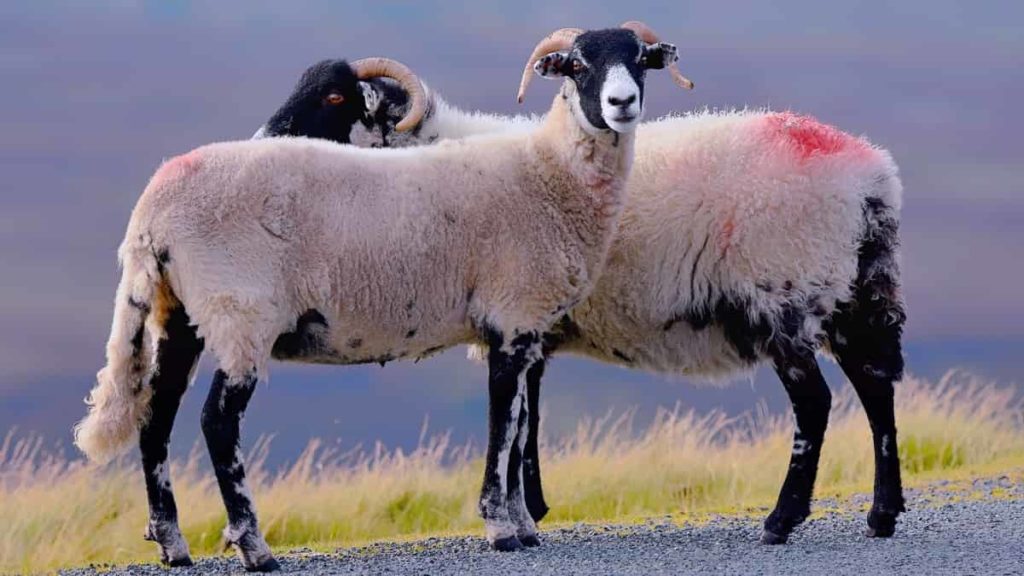
What are the symptoms of Johne’s disease in sheep?
Johne’s is spread through the ingestion of manure and milk. Infection usually occurs in young animals, but they do not exhibit symptoms until they are approximately three years old. Symptoms include chronic diarrhea, decreased milk production, thin body conditions, or unresponsiveness.
What is iceberg disease in sheep?
In sheep, the iceberg disease is used to describe chronic infectious conditions that are insidious spread and have a huge and increasing impact on the productivity of the flock. They may affect ewe longevity and health as well as impact lamb viability and growth. Iceberg disease is a term used to describe diseases that are often slow to develop, with more animals within the flock/herd harboring disease than those exhibiting symptoms. Those sheep showing signs are just the tip of the iceberg, but affected flocks will lead to poorer production.
Is mastitis contagious in sheep?
Mastitis causes inflammation of the mammary gland. The bacteria which cause mastitis in sheep are Streptococcus sp., Staphylococcus sp., Pasteurella sp., and coliforms, such as E. It can be caused by bacteria that invade the mammary gland or physical injury. The inflammatory process of the mammary gland can have several origins. For example, traumas and lesions can be due to infectious agents, such as fungi, viruses, or in most cases, bacterial agents. They can cause either environmental or contagious mastitis.
What does sheep mastitis look like?
Signs that a sheep has mastitis are redness and swelling of the udder. Initially, it will be red or purple and hot, but a chronic case will feel cold and hard. The affected animals will walk stiffly due to pain in the udder and will generally isolate them from the flock. Clinical signs of mastitis have a swollen, painful udder, generally involving only half a portion.
The affected half will become red or purple and feel hot, but the disease progression becomes cold and clammy. The sheep looks sick, walks stiffly, has a high temperature, and becomes isolated from the flock. The lambs may show signs of starvation.
How can mastitis be prevented in sheep?
Important actions in reducing the incidence of mastitis are supplying good nutritious food and providing a clean lambing paddock. Maintain good hygiene if sheep are housed, and keep away the sheep from prolonged periods in muddy yards and laneways during the first six weeks of lactation. The sheep teats and udder should be inspected regularly for lesions to prevent flocks with a high incidence of mastitis. Isolate affected animals to avoid spreading the disease through cross-sucking.
How do you treat mastitis in sheep?
Treatment of mastitis in sheep generally involves intramammary infusions of antibiotics. Milk samples will be collected from the affected animals to determine the main bacteria and the correct medication to use in the early stages of infection. Treatment should be continued for several days until the clinical signs have gone away. There is no specific treatment for chronic mastitis, and the affected animals should be culled.
What are the symptoms of worms in sheep?
A typical symptom of a worm problem is thriftless sheep. A thriftless sheep is one that is not eating enough, is losing weight, and tends to lag behind the flock when moved. A worm problem often results in sheep scouring and becoming daggy. Subclinical infestations with roundworms may cause inappetence, reduced growth rates, reduced wool quality, and reduced milk production in ewes. If worm burdens are large, diarrhoea and Weight loss will be obvious, especially in growing lambs during the warm summer months.
In case you missed it: Best Practices to Grow Taro Root at Home: Check How this Guide Helps Beginners
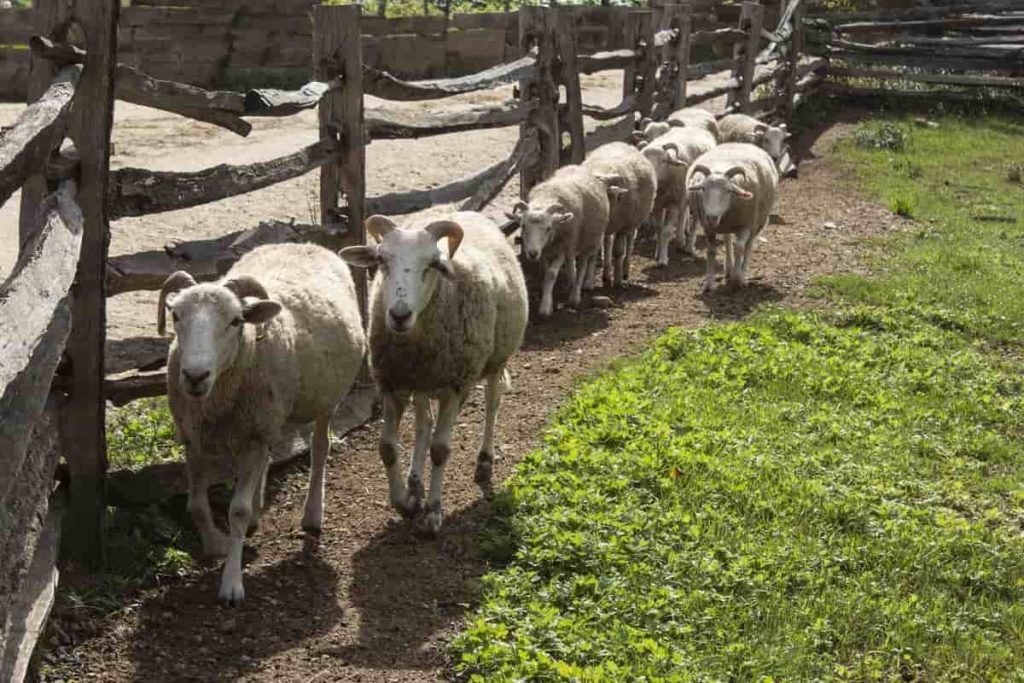
How do you prevent parasites in sheep?
Three broad types of internal parasites can cause significant health issues in sheep – worms, flukes, and protozoa. Worm infestation by roundworms and barber pole worms is probably the most common cause of ill thrift in sheep. One of the best ways to control parasitism in sheep flocks is to monitor for parasite build-up on a routine basis. This monitoring can be done by taking fecal samples to the veterinarian to get a fecal flotation examination and an estimation of eggs present in it.
How do you prevent Coccidiosis in sheep?
Coccidiosis in sheep is best prevented by creating a clean and dry environment with reduced stress. If ewes lamb in pens, providing adequate clean litter, maintaining the sheep bedding dry, and keeping udder and teats clean are critical in reducing the chance of ingesting Coccidia when nursing. Graze lambs on pasture not previously grazed by earlier lambs and treat affected lambs based on faecal oocyst egg counts with history and clinical signs.
Conclusion: The diseases caused by bacteria, viruses, and parasites (internal and external) lead to less growth, reduced milk quality, and low-quality wool, causing major productivity losses. These diseases are unavoidable but can be prevented by maintaining a hygienic farm area and following strict biosecurity measures to limit the spreading of diseases.
- Sheep Farming Business Plan for Beginners
- Aquaponic Farming at Home: A Step-By-Step Guide
- Profitable Village Farming Business Ideas in 2024
- High-Yield Aquaculture: Fast-Growing Fish for Farming
- Effective Fish Pond Construction Techniques for Beginners
- Irrigation and Water Management in Pineapple Farming
- Blossom to Harvest: Mastering Flowering and Pollination in Papaya Farming
- Pig Fattening Essentials: From Selection to Sale for Beginners
- Raising Wagyu Cattle: A Complete Guide for Premium Beef Production
- Soil Types and Their Water Holding Capacity
- Optimizing Irrigation Schedules for Coconut Groves for Enhanced Yield
- Espresso Your Garden: Coffee Grounds for Healthier Acid-Loving Plants
- The Best Soil Mix for Snake Plants: How to Mix Your Own Snake Plant Soil
- Green Thumb Success: Expert Tips for Cultivating Greenhouse Beans All Year Round
- Bloom All Year Round: The Ultimate Guide to Indoor Hyacinth Care
- Eco-Friendly Gardening: How to Make Liquid Fertilizer from Kitchen Waste
- Ultimate Guide to Grow Anise in Pots: Explore Seed Propagation to Harvesting
- Guide to Raising Chester White Pigs: Discover Breed Facts to Growth Management
- Mastering the Elegance: The Ultimate Guide to Weeping Cherry Tree Care, Planting, and Maintenance
- Ultimate Guide to Planting Garlic in Grow Bags: Growing Strategies for Beginners
- How to Fix Spider Plant Leaf-Related Problems: Natural and Organic Remedies
- 10 Reasons Why Your Tulsi Plant is Shedding Leaves: Home Remedies and Solutions
- Optimizing Growth and Yield: The Advantages of Palm Bunch Ash Fertilizer
- Utilizing Neem Oil Extract as a Natural Pesticide for Hydrangea
- From Soil to Harvest: Various Ways in Which Farmers Can Use AI Tools
- Steps to Encourage and Induce Citrus Flowers: A Comprehensive Guide
- How to Fix Snake Plant Leaf-Related Issues: Natural and Organic Remedies
- Transform Your Garden into a Fragrant Oasis with Raat Ki Rani (Night Blooming Jasmine)
- Discover the Ideal Chicken Breeds for Philippine Farms
- How to Create a Poultry Egg Farm Business Plan for Profits
- Grow Lemon Cucumbers Like a Pro: Insider Techniques for Bountiful Yields
- Ultimate Guide to Caring for Your Pink Princess Philodendron: Tips for Thriving Variegation
- Areca Nut Profit Per Acre: Calculating Yield and Cost of Cultivation
- How Kaveri Chicken is Becoming a More Profitable Breed in Indian Backyards
- Transform Your Barn: 9 Steps to Convert a Horse Stall into a Chicken Coop
- Exploring Suffolk Sheep Disadvantages with Limitations and Challenges
